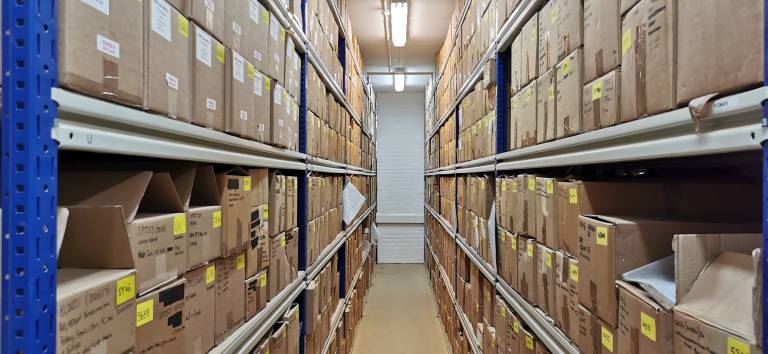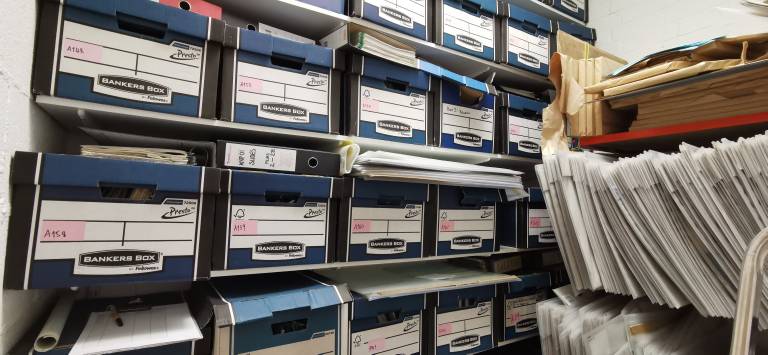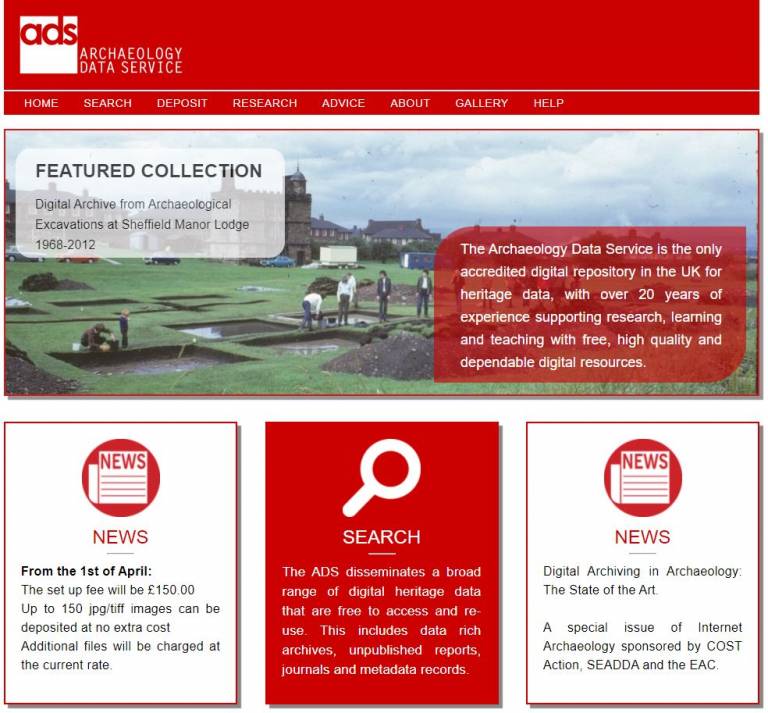Museums and Us: Where does all the archaeology go?
23 June 2021
Ever wondered what happens to all the artefacts from a development-led archaeological project once it is completed? Nicola Elphick, archive officer for ASE, gives us the lowdown and looks to the future of archaeological archives and museums.

Introduction
Our heritage is a finite resource and the process of excavation is ultimately destructive. We can’t go back to a site once fieldwork has been completed. Therefore, the records we keep about an archaeological site need to be thorough and as complete as possible. Introducing the archaeological archive!
What is an archive?
Archaeological archives are unique and connect us to our past. Each contains all the finds, paperwork, and digital records from a site.
Archives are used for museum displays, community projects and can be reinterpreted by future researchers. We never know what new scientific techniques will be available in the future and what more information the archive may hold for us.
Even after fieldwork is completed, the finds analysed, and the report written, there is still a lot of work to do. A project is only officially finished when the archive is deposited in a local museum, where it can be put on display for the public.
Once fieldwork and post-excavation work is complete it falls to the archive officers to make sure the paper, finds and digital archives are up to national, international and the specific museum standards. Each museum has slightly different requirements, which can cause quite a headache for those of us working on them!
Archive contents
There are three parts to an archaeological archive - paper, finds and digital.
Paper records include site records (context sheets, photo registers, etc.), any recording sheets finds specialists may use during their analysis, drawings, and the archaeological report that describes and interprets what was found. These are compiled into one logical standardised order so different archives can be compared, even those from sites excavated by different archaeological units.

The paper archive.
Finds archives need to be transferred into museum-specific size boxes. There is no standard box size for museums in England as they all have different shelving and storage spaces! Each box needs to be ordered and labelled so retrieval of finds is made quick and easy.
Digital archiving is increasing in importance as more and more archaeological data are recorded using digital methods. Digital records can include finds databases, context databases and matrices, digital photographs, GPS data so we can accurately plot a site, as well as digital copies of the site report. Once compiled, digital records are uploaded to the Archaeology Data Service, an accredited digital repository for archaeological data. Data disks are also sent with the paper archive to the local museum upon deposition of the finds and paper archives.

The Archaeology Data Service website
Like the finds and paper archive, digital records need to be archived in a logical and ordered way to ensure that they are comparable, and easily migrated into newer versions of software. We produce a metadata document including information on file size, software and versions.
Transfer of Title
Under English law the landowner owns all the artefacts we find from the site. Before we can deposit the archive the repositories or museums must require the title (right of ownership) to the finds. We contact the landowner in order for them to sign over legal title to the finds.
Most archaeological finds have very little or no monetary value, but they are a precious resource for us to understand our past. The museum needs to have ownership of the finds when they are deposited so they can do any conservation work, put them on display and also look after them in perpetuity.
The only exception to this is human remains. No one can own a person’s skeleton, therefore there is a big presumption once we have completed our investigations that human remains will be reburied in consecrated ground.
Once the title to the finds has been transferred at deposition the finds and paper archive become the property of the museums and our job is done.
Looking towards the future
Museums are in an unprecedented position currently. Funding cuts, lack of archaeological expertise and storage issues are causing a backlog of archaeological archives to be deposited. There is a real crisis looming for the profession and a potential for these archives and our heritage to be lost. Museum professionals, commercial archaeologists and county archaeologists need to work together to alleviate the storage crisis – or soon there will be nowhere for the archaeology to go!
 Close
Close

